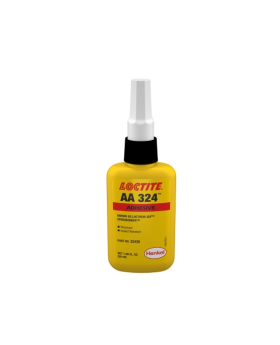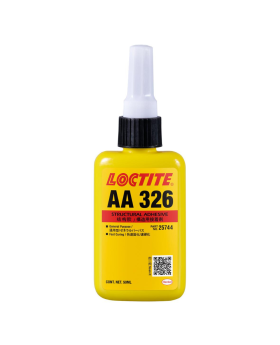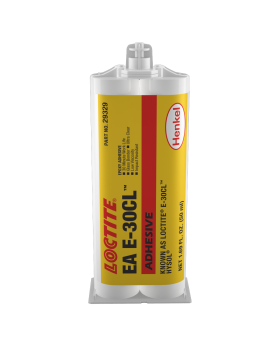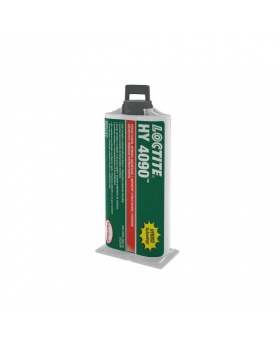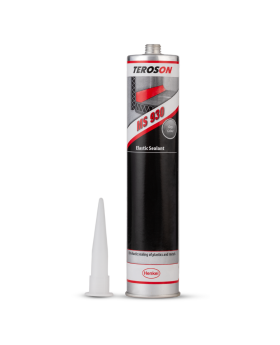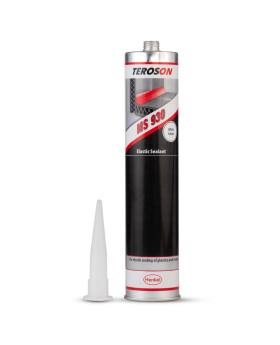The demands from the markets are ever evolving, and so is the manufacturing landscape. Increasing joint strength while achieving light-weighting goals, fewer process steps, better aesthetics, etc. has become a priority. LOCTITE Structural bonders and sealants have been helping manufacturers get long-lasting bonding and sealing while increasing productivity and reducing cost.
LOCTITE Structural adhesives are engineered to meet a wide range of industrial bonding, sealing and assembly requirements using formulations like acrylics, epoxies, modified silanes, polyurethanes, and hybrids. It makes the joint as strong as welding - 2x stronger than rivets. All this at half the cost of welds, rivets, or double-sided tapes. Watch this video to know more.
Joining difficult to weld metals

SOLUTION:
Welding is great but doesn’t work on thin metals (wall thickness < 0.5mm) or on dissimilar metals with different melting points like Aluminium and Stainless Steel. However, industrial grade LOCTITE structural adhesives will be just right for such requirements.
View ApplicationJoin multiple substrates

SOLUTION:
LOCTITE Structural adhesives bond any combination - metal to metal, metal to plastic, plastic to glass, plastic to plastic, ceramic to metal, composite to composite, wood to metal, natural materials to metal reliably at a much lesser cost.
View ApplicationReduce assembly time and cost

SOLUTION:
LOCTITE Structural adhesives don’t need special equipment, skilled labour, cutting, post process clean-up, etc. which are used in welding, riveting, and double-sided tape that add to the time and cost.
View ApplicationImprove aesthetics

SOLUTION:
The bond of LOCTITE Structural adhesives remains hidden from view, making aesthetically pleasing end-products. They are also resistant to corrosion unlike welded seams and bolt heads.
View ApplicationJoin magnets on metal parts fast

SOLUTION:
Bond ferrite, alnico, and neodymium iron boron reliably and fast with LOCTITE Structural adhesives.
View ApplicationOptically clear bonding and potting

SOLUTION:
Get clear bond-lines on multiple substrates where aesthetics are important with LOCTITE Structural adhesives.
View ApplicationFlexible seal for glass windows in frames

SOLUTION:
LOCTITE Structural adhesives secure glass panels within their frames in inspection and safety windows, adding structural integrity and stiffness.
View ApplicationQuick, reliable, high strength repairs
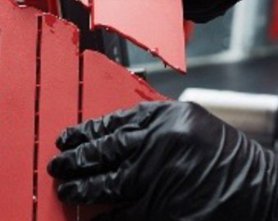
SOLUTION:
For repairs where the broken area is larger and needs higher strength, a better alternative to instant adhesives or locally available 5-min epoxies is LOCTITE high strength universal bonder LOCTITE HY 4070
View ApplicationLOCTITE Structural bonders are preferred over welding by designers for fabrication projects. They have higher strength than spot welds, cost half, and are up to 20 times faster.
-
Room temperature curing adhesives that don’t need any special equipment.
No special skills needed and can be upto 20 times faster than welding.
Bonded joints have uniform stress distribution resulting in better load transmission.
Double-sided tapes offer instant assembly. However, cutting the tape, applying and setting the parts affects the cost and productivity. LOCTITE Structural Adhesives are simple to use and offer strength as high as overlap welds.
-
Has strength equal to that of overlap welds.
Penetrates through oils and contamination to some extent and gain adhesion.
100% gap filling and unification of the assembly.
Mechanical fastening methods like rivets and bolts reduce productivity and are not cost-effective. LOCTITE Structural Adhesives deliver 2x more strength at half the cost. Also, bonding with structural adhesives is easier and quicker than bolting or riveting.
-
Easy and quick application process as only surfaces need to be clamped post dispensing adhesive bead.
Distributes stress uniformly across the entire bond area spreading out the load and providing structural integrity.
No loosening under vibration or thermal expansion as the bonded parts are completely unitized by the adhesive.

Uniform stress distribution
- Uniform distribution
- Absorbs stress loads

Increased reliability & durability
- Fatigue resistant
- Ageing resistance to structures

Weight reduction
- Joins multiple lightweight materials that are resistant to thermal and mechanical joining methods
- Joins light-weight designs resistant to thermal and mechanical joining methods

Cost reduction
- 50% less expensive
- Simplify design
- Don't require complicated equipment, post-process clean-up, skilled labour or extensive inventory

Increased productivity
- Simple and fast bonding process
- No drilling, complicated welding, grinding and polishing
- Cuts tapes in precise dimensions

Unchanged surface properties and texture
- Doesn't change texture or mechanical properties of substrate
- Doesn't weaken the substrate
- Doesn't alter material properties

Improved aesthetics
- Invisible as it's applied inside the joint
- Visually appealing product

Seal bond and protect in one step
- Prevent moisture and contaminants from ingress
- Prevent corrosion
Epoxies

Epoxies: LOCTITE Structural adhesives based on epoxy technology bond multiple substrates providing high shear strength.
- Rigid bonding
- 1-part (1k) or 2-part (2k) solutions
- Room temperature or heat cure
- Excellent gap filling
- Very high shear strength
- Ideal for small to medium surface
- Excellent chemical resistance
Acrylics

LOCTITE Structural adhesives based on acrylic technology bond multiple substrates and provide a rigid to slightly flexible bond.
- Rigid to slightly flexible bonding
- 2-part (2k) or 2-step solutions
- Very high impact and peel strength
- Ideal for small surfaces
- Excellent chemical resistance
Polyurethanes

LOCTITE Structural adhesives based on polyurethane technology are tough and durable as they have a blend of cohesive strength and flexibility.
- Slightly flexible bonding
- 1 part (1k) or 2-part (2k) solution
- Primerless adhesion on many substrates
- High impact strength
- Good UV and weather resistance
- Good resistance to solvents
Silane Modified Polymers (SMP)

LOCTITE Structural adhesives based on silane-modified polymer technology are designed for elastic seam, joint sealing, and bonding of most metals and plastics.
- Elastic adhesion
- 1-part (1k) or 2-part (2k) solution
- Cures by humidity or atmospheric moisture
- Primerless
- Fast curing
- Good UV and weather resistance
- Paintable after applied
Hybrids

LOCTITE Structural adhesives based on hybrid technology combine the strength of epoxies with the speed of cyanoacrylates. These universal bonders ensure substrate versatility, cure faster and have high strength.
- Rigid bonding
- 2- part (2k) solutions
- Multi-material bonding
- Gains very high strength very fast
- Non-flammable


Looking to improve the reliability of your assemblies?
Learn how LOCTITE Structural Bonding solutions can help you in achieving reliable results with maximum strength.
Looking for professional advice?
Talk to our expert for first-hand information about achieving reliable results with LOCTITE Structural Bonding solutions.
We have been using welding for our structural requirement. Will structural adhesives be able to achieve the right strength?
LOCTITE structural adhesives have proven to be able to take almost as much load as overlap welding at just half the cost. LOCTITE adhesive also offers other advantages like making the process simple and providing sealing along with bonding.
We use adhesive tapes. It is not messy. Wouldn’t using LOCTITE adhesives increase the process time and cost?
While double sided adhesive tapes are not messy, their application process is definitely very long and complicated – with the need to cut to specific dimensions and expensive activators. LOCTITE adhesives are mostly applied through static mixers that ensures precise application without any mess.
We are using polypropylene and we have tried to use multiple methods and adhesives before, but they didn’t work. Which LOCTITE adhesives would be suitable?
There are many suitable LOCTITE structural adhesives based on acrylic, epoxy, modified silane and hybrid technologies that would be ideal for bonding polypropylene. Drop a query to our LOCTITE experts with the specifics of the application requirement and they will be able to recommend the right solution.
Replacing rivets is out of question – if we use adhesives, it will take longer to bond but with rivets we would be able to assemble instantly.
Rivets offer the advantage of instant assembly, however result into concerns of reliability because of uneven stress concentrate points that become fatigue and failure points and also lead to corrosion. Instead, LOCTITE structural adhesives offer better reliability and come in various cure types which can be further accelerated with the help of activators.
Can LOCTITE products withstand loads under extreme humidity and temperature conditions?
Yes, LOCTITE structural adhesives have been designed to withstand heavy loads under various ambient conditions. Especially, LOCTITE structural adhesives based on modified silane technology which cure in the presence of humidity, are excellent for outside applications where high temperature, UV resistance, etc. features are preferred.
Which LOCTITE structural adhesives can bond rubber to metal?
LOCTITE structural adhesives based on acrylic, epoxy, modified silane technology and hybrids are excellent for bonding rubber to metal. Drop a query to our LOCTITE experts with the specifics of the application requirement and they will be able to recommend the right solution.
Is it possible to bond glass to glass or glass to metal with LOCTITE adhesives?
Yes, bonding dissimilar substrates like glass to metal or even glass to glass is possible with LOCTITE adhesives. If optical clarity and aesthetics is a must, choose clear epoxies like LOCTITE E-30 CL. Otherwise LOCTITE acrylics are also a great choice for bonding glass to metal or glass to glass. Prefer modified silanes if glass has to be fixed to a metallic frame. Drop a query to our LOCTITE experts with the specifics of the application requirement and they will be able to recommend the right solution.
Is any surface preparation needed before applying LOCTITE structural adhesives?
Removal of dirt, dust or other surface impurities from the surfaces to be bonded is important before adhesive application as they can interfere with the effectiveness of the bond strength. This can be achieved through either degreasing or abrasion. Chemical treatments like primers, corona discharge, flame and plasma treatments can also be used to modify the surface properties to further enhance bond strength.
What is meant by open time/working time/pot life of an adhesive?
Open time is the time within which parts should be assembled post application of the adhesive to ensure proper surface wetting and achieve maximum strength.
What does 'on-part' life of adhesive signify?
This term is relevant for adhesives where activator is used on one of the parts. On-part life is the time within which activator or primer provides full performance.
What is the difference between fixture time and full cure time?
Fixture time of an adhesive is the time needed to achieve enough strength to hold the parts together without additional support or to achieve lap shear strength of 0.1 N/mm2 whereas full cure time of an adhesive is the time needed to achieve full performance.
What is a hybrid adhesive?
Combination of two different adhesive technologies, which are normally stand-alone technologies and at the outset cannot be manually mixed. A Hybrid combines the positive attributes of both technologies which provides new performance parameter. LOCTITE Hybrid adhesives combine the speed of cyanoacrylates (commonly known as instant adhesives) with the strength of epoxies/acrylates to give universal that can bond anything in seconds providing high strength.
 Product Recommender
Product Recommender  Value Calculator
Value Calculator  Track Order
Track Order
 Offers
Offers  1800 123 1922
1800 123 1922 















































 Maintenance
of Pumps
Maintenance
of Pumps
 Maintenance
of Electric
Motor
Maintenance
of Electric
Motor
 Maintenance
of Gearbox
Maintenance
of Gearbox
 Maintenance
of Compressor
Maintenance
of Compressor

